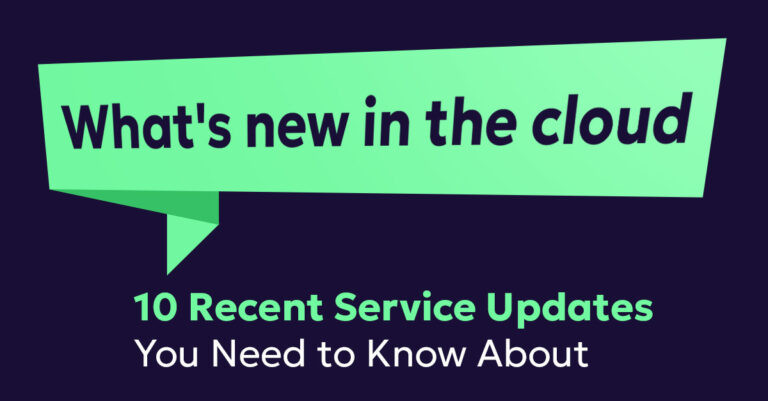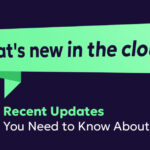
10 CSPs cloud service updates – July
In July 2024, AWS, Microsoft Azure, and Google Cloud Platform rolled out key updates that enhance performance, security, and functionality across their services. These updates offer fresh capabilities and improvements that are essential for businesses looking to make the most of their cloud infrastructure. Here’s a detailed look at 10 of the most notable updates:
AWS Updates
Enhanced Oracle Database Support in Amazon RDS for Oracle
Amazon RDS for Oracle now supports the July 2024 Release Update for Oracle Database versions 19c, featuring significant improvements in security, performance, and reliability. This update includes critical security patches that enhance database security and stability, several bug fixes for more predictable database behavior, and performance optimizations that accelerate query processing. Additionally, enhancements in scalability and stability better support high-load scenarios and reduce the likelihood of downtime.
Read more
AWS CloudShell Integration with Amazon VPC
AWS CloudShell now supports seamless integration with Amazon Virtual Private Cloud (VPC), enhancing operational efficiency and security. This update allows developers direct access to VPC resources such as EC2 instances and S3 buckets without additional network configurations, streamlining workflows and reducing setup times. CloudShell is pre-installed with the AWS CLI and SDKs, facilitating quick script execution and command application against VPC resources.
Security enhancements include network isolation within the VPC, IAM role integration for fine-grained access control, session isolation to prevent interference, and TLS encryption for data transmission. Activities within CloudShell are also logged via AWS CloudTrail, ensuring robust auditing and compliance. This makes AWS CloudShell a secure and efficient tool for managing AWS resources.
Read more
Quarterly Security Updates for Amazon Corretto
Amazon Corretto, AWS’s free, multiplatform, production-ready distribution of OpenJDK, has rolled out its quarterly security updates for Long-Term Supported (LTS) versions—Corretto 8, 11, and 17—and the Feature Release (FR) version, Corretto 20. These updates address critical security vulnerabilities such as CVE-2023-21930, which could allow remote code execution, and CVE-2023-21937, a high-severity issue in the JavaFX component that could lead to unauthorized data access. Additional improvements include memory safety fixes and enhancements to the TLS/SSL stack, which protect against denial-of-service (DoS) attacks and man-in-the-middle (MITM) incidents.
Read more
Expanded AWS Training and Certification Programs
AWS has updated its Training and Certification offerings, introducing new courses such as “Architecting on AWS – Advanced Concepts” and “AWS DevOps Engineering – Real-World Practices,” alongside updates to certifications like “AWS Certified Solutions Architect – Professional.” These enhancements cover advanced AWS technologies and methodologies, equipping professionals with the skills needed to effectively deploy AWS solutions in complex scenarios. This initiative supports ongoing professional growth and proficiency in navigating the evolving cloud landscape.
Read more
Microsoft Azure Updates
Azure AI Content Safety for Enhanced Moderation
Azure AI Content Safety now leverages advanced AI technologies to enhance content moderation across various digital platforms. This service employs Natural Language Processing (NLP) to analyze text for harmful language, machine learning (ML) models to detect patterns of inappropriate content, and Computer Vision to scrutinize images and videos for harmful visuals. Additionally, it incorporates Deep Learning for precise analysis and Multimodal AI to assess multimedia content comprehensively.
Real-world applications of Azure AI Content Safety include social media platforms using it for proactive moderation, online marketplaces monitoring interactions for safety, and gaming communities filtering toxic behavior. It’s also utilized in educational settings to maintain conducive learning environments and by corporations to ensure professional communications. These capabilities make Azure AI Content Safety a critical tool for maintaining safe and respectful interactions online.
Read more
New Features in Azure Kubernetes Service (AKS)
Azure Kubernetes Service (AKS) has enhanced its functionality with several key features. The general availability of Azure CNI Overlay improves networking and allows for larger cluster sizes by addressing IP exhaustion issues. AKS now supports automatic node pool provisioning, optimizing resource allocation based on demand.
Security is bolstered with the addition of confidential compute nodes, protecting data in use through advanced hardware-based technologies. The new Azure Policy add-on ensures consistent policy enforcement across clusters for better compliance and governance.
Integration with Azure Arc provides unified management across multi-cloud and edge environments, extending Azure services beyond traditional boundaries. Additionally, Azure Managed Grafana integration enhances monitoring with seamless service connectivity, pre-configured dashboards, advanced alerting, and customizable visualizations, ensuring a secure and scalable monitoring environment.
Read more
Real-Time Analytics with Azure Synapse Analytics
Azure SQL Database has rolled out several updates to enhance efficiency and security. The database shrink enhancement allows for more efficient space reclamation, reducing storage costs by optimizing unused database space. Additionally, new advanced indexing options improve query performance, providing more control over index maintenance and creation. Enhanced security features add extra layers of encryption, bolstering data protection and compliance with industry standards.
These updates also bring improved scalability options to handle larger data volumes and workloads, ensuring robust performance during peak usage. Query performance insights have been enhanced, offering actionable recommendations to boost data processing efficiency. These improvements collectively enable businesses to manage their databases more effectively, supporting cost optimization and operational efficiency across diverse industries.
Read more
Google Cloud Platform Updates
Managed Mistral AI Models Now Available on Vertex AI
Google Cloud has introduced a significant update with the integration of Mistral AI managed models on Vertex AI. This new feature allows users to directly access and deploy Mistral AI’s advanced models via the Vertex AI API endpoint. By simplifying the deployment process, users can now incorporate cutting-edge AI functionalities into their applications more efficiently. This update is particularly useful for developers looking to enhance their applications with AI without the need to manage complex infrastructure setups. The ability to send requests directly to the Vertex AI API endpoint means faster implementation and a streamlined workflow, making it an essential tool for businesses aiming to leverage AI technology for competitive advantage.
Read more
Updated Advanced API Security with Data Residency Support
Google Cloud announced an update to Advanced API Security, now featuring support for data residency. This new capability allows organizations to meet compliance and regulatory requirements by specifying the geographic locations where their API security data is stored. The addition of data residency support ensures that businesses can manage and safeguard their data within specified regions, aligning with local data protection laws and preferences.
Read more
New Image Generation Capabilities with Imagen 3 on Vertex AI
Google Cloud’s Vertex AI now features the latest iteration of the Imagen image generation models, Imagen 3.0. Available in standard and low-latency versions, these models support a range of aspect ratios including 1:1, 3:4, 4:3, 9:16, and 16:9. Each model comes with a digital watermark (SynthID) enabled by default, which includes watermark verification capabilities. Additionally, users can configure safety features tailored to specific requirements, such as adjusting safety and person/face settings.
Read more








